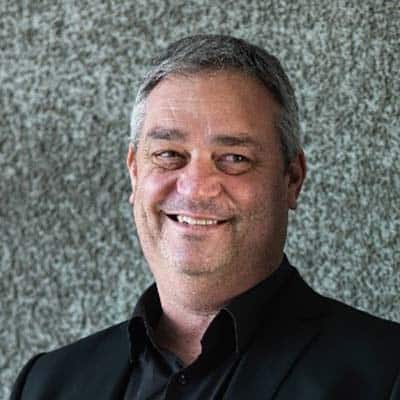Time-varying Multihazard forecasting
Te matapae i ngā tini-mōrearea

Vision
Aotearoa New Zealand’s economy, infrastructure and society is resilient to the threats posed by our active volcanoes.
Programme description
Volcanoes threaten Aotearoa New Zealand’s resilience with many complex hazards that can impact large areas with permanent landscape changes. The most urgent threats are to the surrounding communities, those downwind of our volcanoes, and the transport, electricity, tourism and agricultural sectors.
We aim to develop resilience and mitigation solutions for threatened areas by integrating our improved knowledge of the multiple and dynamic threats of volcanic activity into long-term planning and emergency management processes.
To achieve this, we worked with our stakeholders and partners, including GeoNet, iwi and hapū, local government, and Volcano Advisory Groups. Our research is organised into three closely related projects that are creating reliable forecasts of volcanic activity in Aotearoa New Zealand, providing greater certainty about the hazards and impacts of volcanic eruptions, and integrating the improved forecasting ability into governance and emergency planning.
Our work is closely aligned with the Whanake te Kura I Tawhiti Nui programme to investigate the synergies that exist between a western science understanding of the evolution of landscapes and those derived from the Māori worldview or putaiao. Our mitigation solutions and resulting co-governance structures will recognise the deep cultural connection Māori have with our volcanoes and build kaitiakitanga.
Our goal is for decision-makers in Aotearoa New Zealand to have the knowledge they need to implement effective volcanic resilience and mitigation solutions.
Wawata
He manawaroa te ohanga, te tūāhanga me te pāpori ki ngā mōrearea ka puta pea i ngā puia oho.
Whakaahuatanga papatono
Ka raru te puia i te pakari o Aotearoa Niu Tireni me te nui o nga morearea morearea e pa ana ki nga waahanga nui me nga whakarereke whenua tuuturu. Ko nga tuma tino mate nui ko nga hapori e karapoti ana, nga heke o o tatou puia, me te kawe, hiko, tuuruhi me nga waahanga ahuwhenua.
E whaaia ana e taatau te whakapakari ake i nga rongo whakaoranga me nga whakaahuru mo nga waahi whakamataku ma te whakakotahi i te maatauranga o taatau mo te tini o nga tuma hihiko o te mahi puia ki roto i nga whakamahere mo te wa roa me nga whakahaere whakahaere ohorere.
Hei whakatutuki i tenei, kei te mahi tahi matou me o matou rangatira me o matou hoa mahi, tae atu ki a GeoNet, iwi me nga hapū, te kaawanatanga a rohe, me nga roopu Tohutohu a Volcano. I whakaritehia a maatau rangahau ki roto i nga kaupapa e toru e hono tata ana e hanga ana i nga matapae pono mo te mahi puia i Aotearoa Niu Tireni, me te tino mohio mo nga morearea me nga paanga o te puia o te puia, me te whakakotahi i te kaha o te matapae o te matapae ki te whakariterite me te whakamahere ohorere.
Ko ta matau mahi e haangai tata ana ki te hotaka o Whanake te Kura I Tawhiti Nui ki te tirotiro i nga mahi honohonotanga kei waenga i te maatauranga putaiao o te hauauru mo te whanaketanga o nga whenua me nga mea i ahu mai i te tirohanga a te ao Maori, putaiao ranei. Ma a maatau whakaoranga me nga hanganga whakahaere-tahi ka mohio te hononga ahurea hohonu a te Maori me o tatou puia, ka hanga kaitiakitanga.
Ko ta maatau whainga kia whai maataata nga kai-whakatau i Aotearoa Niu Tireni ki te whakamahi i te kaha o te puia me te whakaohonga.
Ngā tauira pāpātanga puia – te ‘Taiwhanga Whakamātau eVolcano’
Research Team
A summary of Resilience Challenge achievements and impacts over ten years of collaborative research
These results contribute to the limited empirical data available for tephra fall building damage and can be used to calibrate existing fragility functions, improving our evidence base for forecasting future impacts for similar construction types globally.
This study highlights the complex nature of episodic, multi-phase, and multi-vent, explosive to dome-forming rhyolitic eruptions, depicting a scenario of great relevance for future volcanic hazard studies at active rhyolitic volcanoes worldwide.
Direct measurements of destruction-causing dynamic pressure in large-scale experiments.
This study investigates variations in anisotropy at Whakaari/White Island between 2018 and 2020, during quiescence, unrest, and the 2019 eruption.
This study testifies the complexity of tephra sequences associated with long-lasting, small-to-moderate eruptions, and describes the key eruption parameters that can be obtained through a detailed characterisation and identifies the main limitations related to the classification of these eruptive styles.